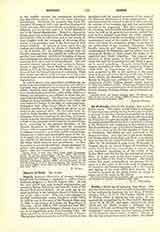

Derbe, a titular see of Lycaonia, Asia Minor. This city was the fortress of a famous leader of banditti, when it was captured by Amyntas, the last King of Galatia (Strabo, XII, i, 4; vi, 3; Dio Cassius, XLIX, xxxii). In Roman times it struck its own coins. It was successfully evangelized by St. Paul and St. Barnabas (Acts, xiv, 6, 20, 21), and again visited by St. Paul (Acts, xvi, 1). Derbe became a suffragan see of Iconium; it is not mentioned by later “Notitiae Episcopatuum“, and we know but four bishops, from 381 to 672 (Lequien, Oriens Christ., I, 1081). The site of the city has not yet been surely identified; the discussions are based on the above-mentioned texts of Strabo and Dio Cassius. It has been placed at Bin Bir Kilisse, at Divle, south of Ak Gel (the White Lake), between Bossola and Zosta, and at Gtidelissin in the vilayet of Konia, which seems more probable.
S. PETRIDES

